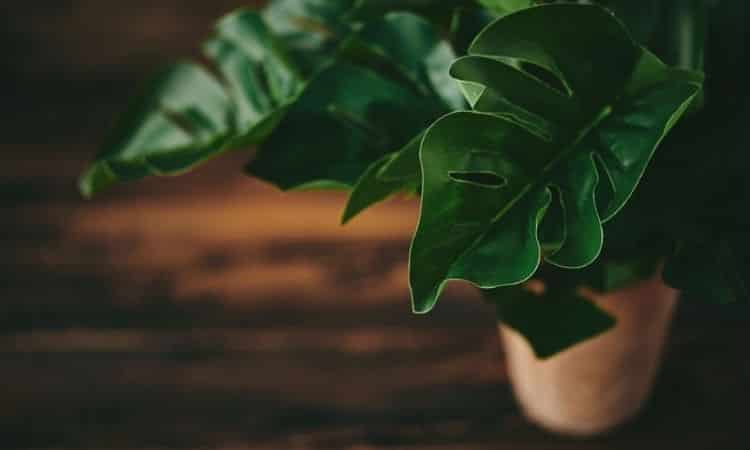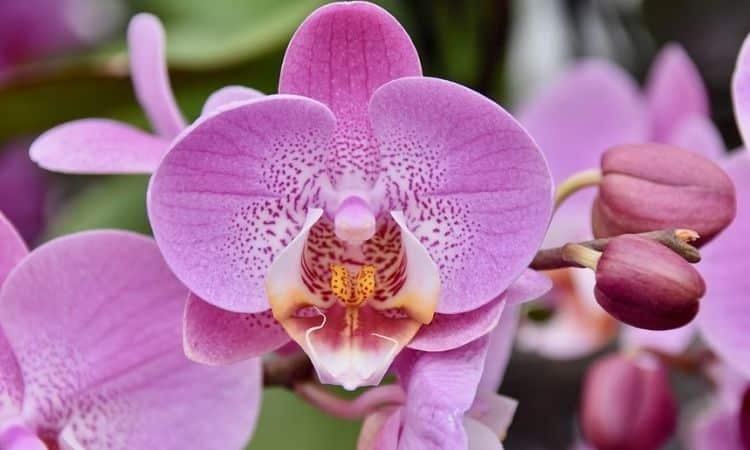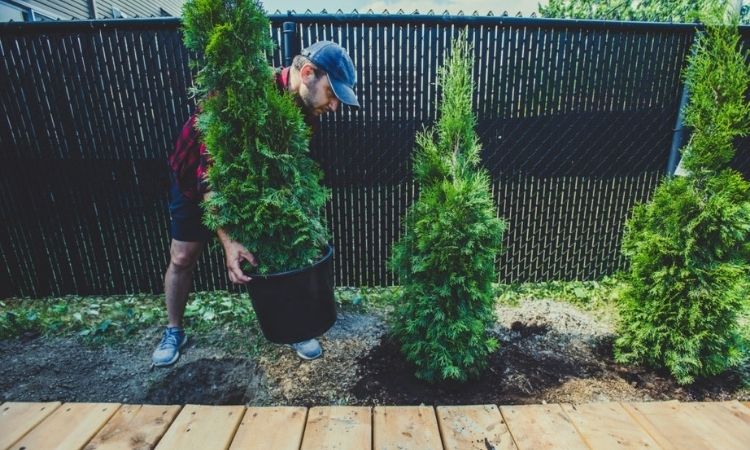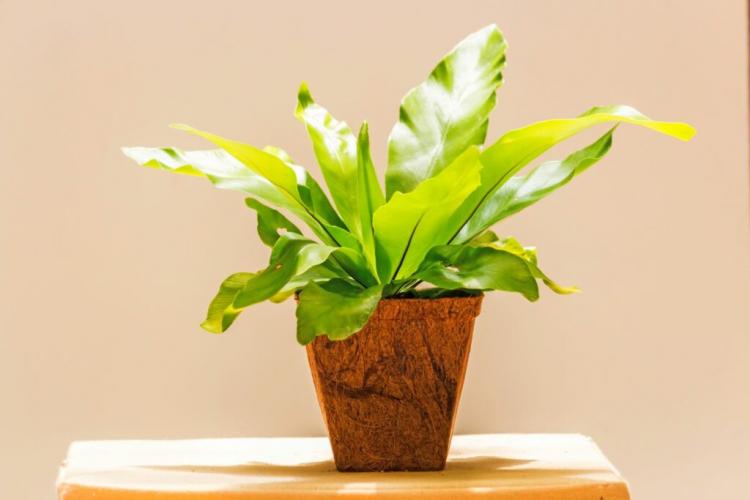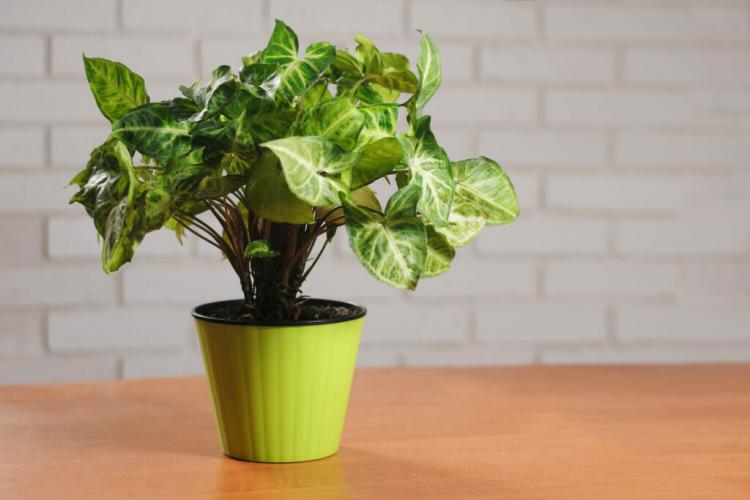Bilbergia Plants
The evergreen ornamental flowering plant Bilbergia is a representative of the Bromeliad family. Its wide belt-shaped foliage is collected in a socket, in the middle of which there is an accumulation of moisture. When the bush blooms, it has a straight peduncle with a drooping inflorescence. The maximum height of the bilbergia is from 0.6 to 0.7 m.
It is a typical epiphytic plant native to Brazil. In nature, it prefers to grow exclusively on trees, and soil mixtures of a special composition are used for cultivation at home. If you create suitable conditions for the epiphyte for its growth and development, then on average it will be able to live from 5 to 8 years. This plant is fast growing. Its bloom begins in the first weeks of winter and ends at the beginning of spring. This perennial is easy to care for.
Brief description of cultivation
Table of Contents
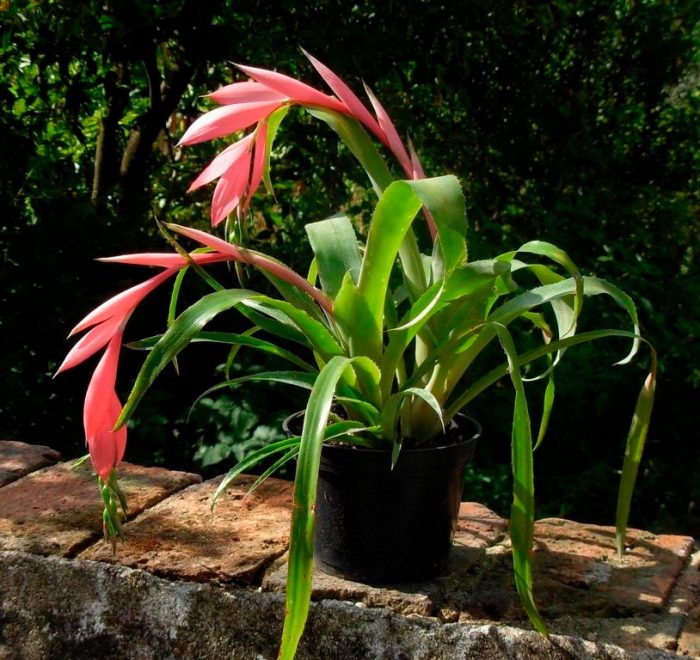
- Temperature . In summer – from 23 to 25 degrees, and in winter – at least 16 degrees.
- Air humidity . The plant feels fine in any humidity. However, it reacts positively to humidification from a spray bottle.
- Illumination . Needs a lot of bright light to be diffused. Protect the bush from direct sunlight.
- Watering . In warmer months, make sure that the substrate is slightly damp all the time. With the onset of the winter period, they resort to reducing watering.
- Substrate . It should be light, well-drained, and fertile.
- Top dressing . During the growing season, they are fed 2 times a month.
- Transplant . It is carried out in the spring and only when necessary.
- Reproduction . By dividing an overgrown plant or by seed.
- Blooming . In young bushes, flowering occurs earlier than in old ones.
Home care for bilbergia
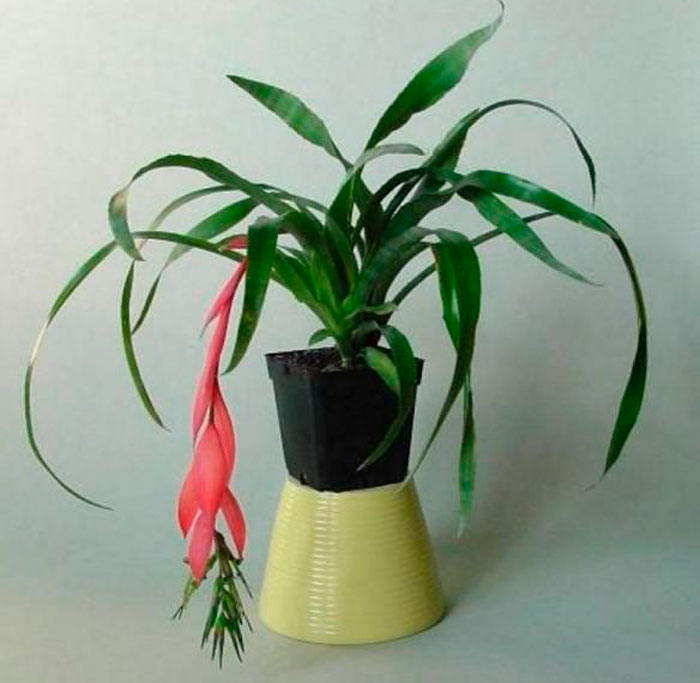
It is quite simple to grow bilbergia indoors. She is not harmed by excessively low air humidity, and she is practically not afraid of drafts.
Bloom
In such a plant, flowering is observed 2 times during one year, namely: in spring and autumn. At this time, a peduncle appears from the middle of the leaf outlet. The flowers are part of the racemose drooping inflorescence, while pink or deep red bracts are located at its base. When the bush fades, many creeping stems are formed at the mother’s outlet. And then it’s gradual withering away is observed.
For the first time, a young bush begins to bloom in the second or third year of growth. If bilbergia has grown very strongly, then at the same time several leaf rosettes may bloom.
Temperature
In summer, the plant feels best in warmth – from 23 to 26 degrees. However, if the room is warmer than 28 degrees, and the humidity level is low, then this will lead to the cessation of the growth of the bush. In winter, the plant must be moved to a cooler place (from 18 to 20 degrees). Bilbergia is able to withstand a drop in air temperature up to 2 degrees. However, the cold snap should be short-lived, otherwise, the flower may die.
Air humidity

Indoor billbergia is able to quickly adapt to the air humidity that is characteristic of a dwelling. In the cold season, when the air is dried by working heating devices, it is recommended to regularly moisten the bush from a spray bottle, using exceptionally soft water for this. If hard water is used for these purposes, then after a while a brownish bloom forms on the surface of the foliage.
Illumination
The plant needs a lot of bright, diffused sunlight. In this regard, it feels great on the east and west windowsill. On the northern window for such an epiphyte, there is excessively poor lighting, and on the southern window, it will have to be regularly shaded from the direct rays of the sun at noon.
Watering
It is necessary to moisten the soil mixture in the pot abundantly and often. Keep it slightly damp all the time. When you water the bush in the summer, be sure to pour a small amount of water into the center of the leaf outlet. However, this is not recommended during the winter months.
Remember that if bilbergia is in a cool room, then with excessive-high humidity there is a high risk of fungal infection. To moisturize the substrate, extremely soft water is suitable. Let it sit well for 3 or 4 days and then filter it.
If you use a moss-based substrate to grow epiphytes, then it should be moistened only after it is completely dry. To do this, pour warm water into a deep container and immerse the pot with the plant in it. When the moss is completely saturated with water, the flower is put in its original place.
Pot selection

For planting bilbergia, you can use a container made of ceramic or plastic. Its value should slightly exceed the volume of the root system. It has been noticed that this flower develops much better if its roots are a little crowded.
You can also use the “bromeliad tree” to grow this epiphyte. For its manufacture, a powerful and thick branch from a tree is used. Take bilbergia and carefully place its roots on the branch, which should be wrapped on top with sphagnum. Instead of a branch, you can use a large piece of tree bark.
You Might Also Like Flowers That Start With B
Substrate
Such a flower is undemanding to the composition of the soil mixture. It should allow air to pass through well and be fairly loose. If you wish, you can buy a ready-made soil mixture for bromeliads in a specialized store. If you are preparing the substrate with your own hands, then a lot of pure river sand and chopped sphagnum must be added to it.
Fertilizer
For feeding bilbergia, which is carried out in spring and summer with a frequency of 1 every 15 days, fertilizer is used for bromeliads, which can be bought at a flower shop. At the same time, it is extremely undesirable to use universal mineral complexes, because they contain a lot of nitrogen.
Bilbergia transplant
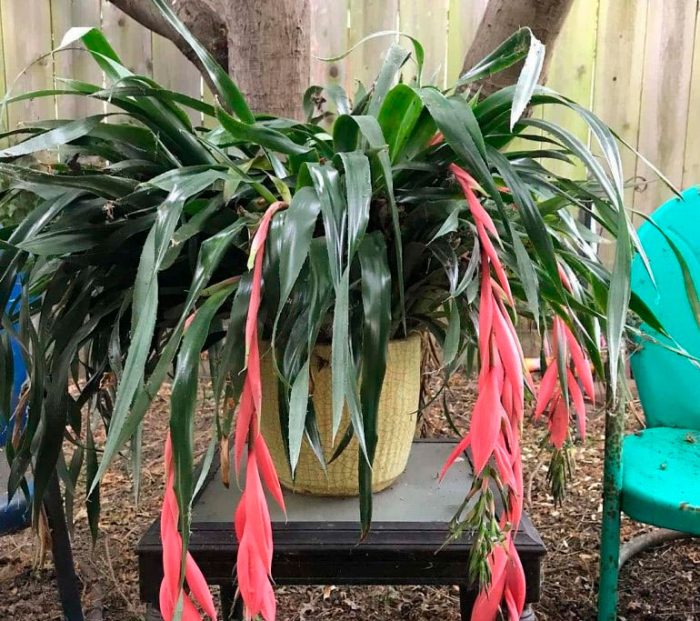
Such an epiphyte is transplanted only in the spring months and only when it is really necessary. It should be borne in mind that the root system of the bush is characterized by rather slow development. As a rule, the transplant is carried out only after the roots begin to crawl out of the drainage holes at the bottom of the container.
Pruning
The plant is not pruned. However, it is recommended to timely remove injured and dried leaf plates, as well as faded rosettes that have begun to die off.
Dormant period
Such a highly decorative epiphyte does not have a pronounced rest period. In winter, the bush has a slowdown in growth and development. At this time, the flower is recommended to be kept cool at an air temperature of 16 to 18 degrees. Thanks to this, the bush will not stretch out due to the excessively short daylight hours during the cold season.
Why does bilbergia not bloom
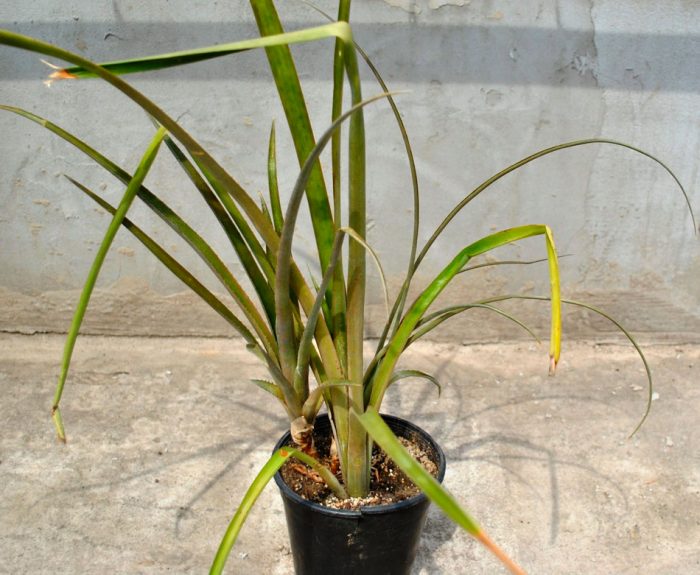
Some growers are faced with the fact that their home bilbergia does not bloom. This may be due to improper care or inappropriate conditions for growth:
- Poor lighting. In this case, the bush is simply transferred to a well-lit windowsill, and if this is not possible, then you will have to highlight it.
- The plant was transplanted into an oversized container. In this case, until the root system fills the entire clod of earth, the bush will not bloom.
- Too poor watering. Moisten the potting medium abundantly and often. Remember to pour a small amount of water into the middle of the leaf outlet during the summer months when watering.
- Lack of nutrients. Be sure to carry out regular feeding of the epiphyte.
- Overly warm wintering. In order for the laying of flower buds to be successful, the plant is recommended for a mandatory warm wintering.
Reproduction methods
Growing from seeds
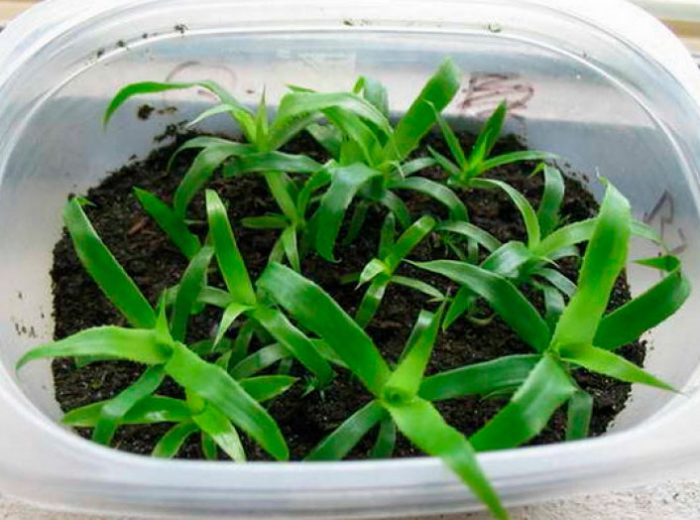
At home, it is quite possible to grow bilbergia from seeds, the main thing is to follow a few simple rules:
- Seed material is sown immediately after harvesting.
- Disinfect the seeds in a pinkish potassium manganese solution before planting.
- Take a small container and fill it with chopped sphagnum mixed with peat. In such a substrate, seeds are sown.
- Cover the crops from above with glass or foil and transfer them to a warm (at least 23 degrees) and dark place.
- Do not forget to arrange regular ventilation of crops.
The first seedlings should appear 4-6 weeks after sowing. Their picking into individual containers is carried out only after the formation of two or three true sheet plates. They are then provided with the same care as the adult specimens.
Reproduction by lateral processes
It is easiest to propagate bilbergia with lateral processes. During active growth, many lateral stems are formed on the bush, with which, if desired, the plant can be easily propagated. The separation of the lateral processes is combined with the transplant procedure. Remember that the more the division is, the better it will take root.
When the bush is divided into several parts, the cuts should be sprinkled with coal powder. For planting a young plant, the same soil mixture is used for adult specimens (see above), and then a mini-greenhouse is built for them. Instead, perlite or chopped sphagnum can be used to root the sections. However, when the shoots take root, they will need to be planted in a soil mixture suitable for bilbergia.
To make rooting faster, shoots are provided with high air humidity. Also, before planting for rooting, it is recommended to process the segments with Kornevin. The first time the bushes will form inflorescences after two or three years.
Possible problems
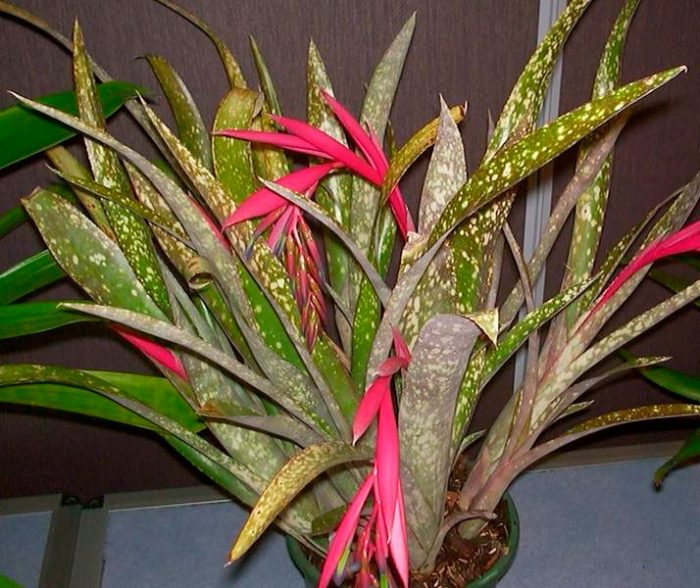
Most often, bilbergia suffers from improper care:
- The tips of the foliage dry out . Low air humidity. Place an open container of water near the flower and do not forget to regularly pour water into the middle of the outlet.
- A rosette of leaves crumbles . Poor lighting. Move the bush to a sunny windowsill or light it up.
- Brownish specks appeared on the foliage . When direct sunlight hits the bush, burns appear. To speed up its recovery, spray the flower with Zircon or Epin.
- Slower foliage growth . Poor lighting and lack of nutrients.
- The appearance of rot on the bush . If there is no drainage and high humidity is present, then the roots can rot. Transplant the flower into a new potting soil as soon as possible, cutting out any problematic areas of the roots and treating them with charcoal.
- Pests . Most often, scale insects, mealybugs and aphids settle on the bush. To get rid of them, use an insecticidal solution.
Types of bilbergia with photos
Most often in room culture, those types of bilbergia are found, which are described below.
Billbergia nutans
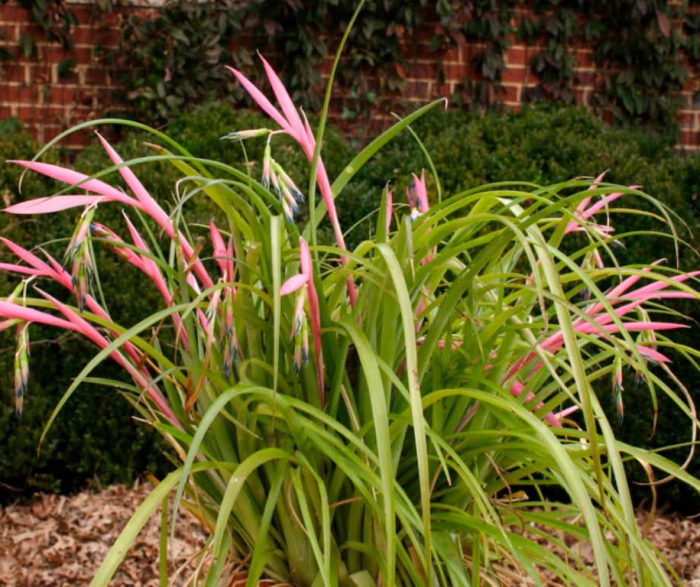
In length, belt-like bright green leaf plates reach about 0.7 m. Under intense light, the leaves acquire a pinkish tint. The large leaf rosette is tubular. Long bracts adorn drooping inflorescences.
Billbergia pallidiflora

This species is found in nature on rocky slopes. A tubular powerful socket consists of a small number of sheet plates. A large number of thorns are located along the edge of the hard rich green leaves. At the top of the curved peduncle, a spike-shaped inflorescence is formed with dense pubescence.
Billbergia magnifica

A powerful tubular rosette is assembled from a few sheet plates. The length of green linear leaves can reach 0.7 m. The spike-shaped inflorescence is collected from blue flowers. Bracts are large and pink.
Billbergia zebrina
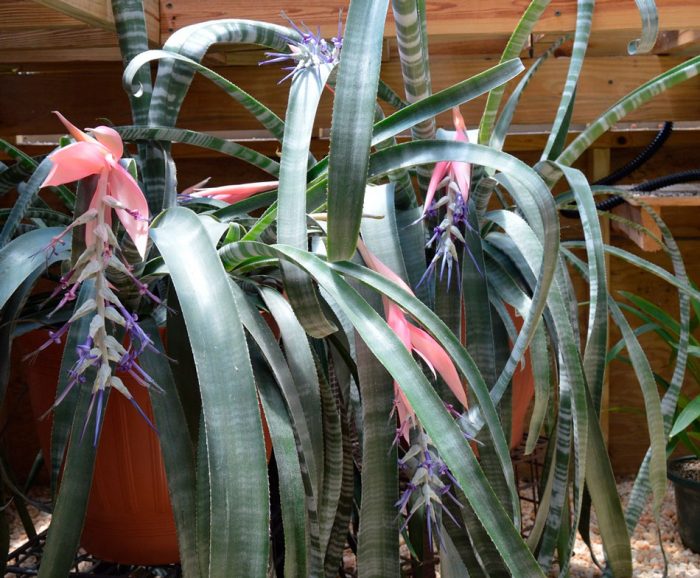
Longleaf plates leathery to the touch are decorated with white stripes. During flowering, blue flowers and large bracts of pink color appear.
Beneficial features
Bilbergia foliage has the ability to produce phytoncides. They contribute to the destruction of pathogenic microbes, resulting in air disinfection. In addition, the flower contributes to an increase in negative air ionization, thanks to which electrostatics useful to human health are established in the room. Also, the plant has an amazing ability to absorb sound. Among other things, Bilbergia has a spectacular highly decorative appearance, so it can decorate any house and apartment.

